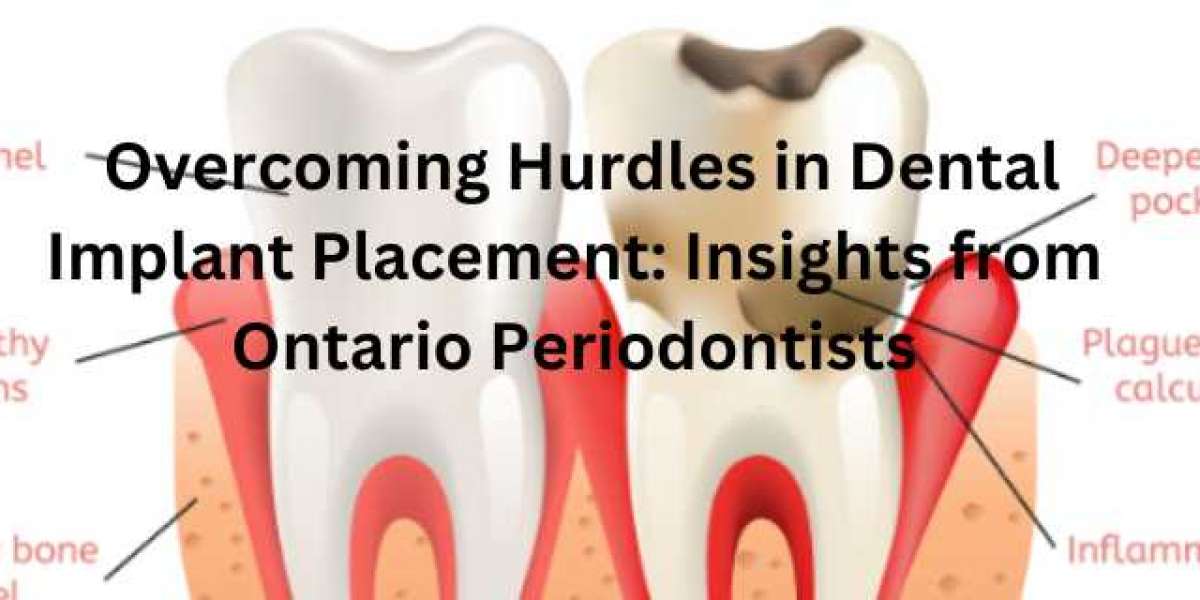Dental implants have revolutionized modern dentistry, offering patients a durable and natural-looking solution for missing teeth. However, the success of dental implant placement relies on numerous factors, and periodontists play a crucial role in ensuring optimal outcomes. In Ontario, periodontists face unique challenges in implant placement, stemming from patient diversity, evolving technology, and interdisciplinary collaboration. This article explores the key challenges faced by Ontario periodontists in dental implant placement and presents innovative solutions to overcome them.
Patient Diversity:
One of the primary challenges for Ontario periodontists is the diverse patient population they serve. Patients present with varying degrees of bone density, gum health, and overall medical conditions, which can significantly impact the success of implant placement. Furthermore, cultural and socioeconomic factors may influence patients' attitudes towards dental care and their ability to adhere to post-operative instructions.
Solution: To address this challenge, periodontists in Ontario prioritize comprehensive patient assessment and personalized treatment planning. Advanced imaging techniques, such as cone beam computed tomography (CBCT), allow for precise evaluation of bone quality and quantity, enabling tailored implant placement strategies. Moreover, patient education initiatives emphasize the importance of oral hygiene and post-operative care, empowering patients to actively participate in their treatment journey.
Evolving Technology:
The rapid advancement of dental implant technology presents both opportunities and challenges for Ontario periodontists. While innovations such as guided implant surgery and computer-aided design/computer-aided manufacturing (CAD/CAM) have improved precision and efficiency, integrating new techniques into clinical practice requires continuous education and training.
Solution: Periodontists in Ontario embrace continuing education programs and hands-on workshops to stay abreast of the latest advancements in implant dentistry. By collaborating with industry partners and attending conferences, they gain access to cutting-edge technologies and techniques. Additionally, investing in state-of-the-art equipment and software enhances the accuracy of implant placement and fosters positive patient experiences.
Interdisciplinary Collaboration:
Successful implant placement often necessitates collaboration with other dental specialists, including prosthodontists, oral surgeons, and orthodontists. In Ontario, fostering effective interdisciplinary communication and teamwork can be challenging due to logistical constraints and varying practice philosophies.
Solution: Ontario periodontists prioritize interdisciplinary collaboration through interdisciplinary treatment planning meetings and shared patient care pathways. By establishing clear lines of communication and mutual respect among team members, they facilitate seamless coordination of treatment protocols and ensure optimal patient outcomes. Leveraging digital communication platforms and teleconferencing technology further enhances collaboration, allowing specialists to consult and exchange insights remotely.
Conclusion:
Challenges in dental implant placement are inherent to the complex nature of periodontal and implant dentistry. In Ontario, periodontists navigate these challenges through a combination of advanced technology, patient-centered care, and interdisciplinary collaboration. By embracing innovation and collaboration, Ontario periodontists continue to elevate the standard of care in dental implant placement, improving oral health outcomes for patients across the province.




